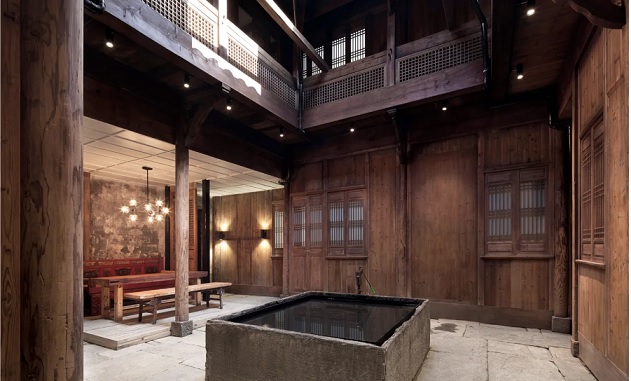
Ru Ling loves spending time in skywells. To her, these courtyards of old Chinese houses are the perfect place to be in on a hot and humid day.
"They are airy, cool and well-shaded," says 40-year-old Ru.
From 2014 to 2021, Ru lived in a century-old timber-framed home in the village of Guanglu in eastern China's Anhui province. She moved there for a change of life after living and working in air-conditioned buildings for many years.
"The natural cool feeling of my home in summer was so refreshing, and a rare find in the modern world," she says. "It also gave the house a calming and zen vibe."
Ru says that the house's skywell helped create this cooling effect. And she's not alone in extolling the benefits of skywells in hot weather. Studies have found that the temperatures inside some of the skywells in southern China are significantly lower than the outside – by up to 4.3C.
In today's rapidly urbanising China, fewer and fewer people live in skywell dwellings – air-conditioned flats in multi-storeyed buildings and tower blocks are the main forms of homes.
But a revival of interest in traditional Chinese architecture is leading some of historic buildings with skywells to be restored for modern times. Meanwhile, as a government push has made low-carbon innovations in the building sector a trend in the country, some architects are drawing inspiration from skywells and other traditional Chinese architectural features to help keep new buildings cooler.
A skywell, or "tian jing" (天井) in Mandarin, is a typical feature of a traditional home in southern and eastern China. Different from a northern Chinese courtyard, or "yuan zi" (院子), a skywell is smaller and less exposed to the outdoor environment.
They are commonly seen in homes dating to Ming (1368-1644) and Qing (1644-1911) dynasties, which were designed to house different generations of relatives, according to a 2010 paper published by the Journal of Nanchang University in China.
Although a skywell's size and design vary from region to region, it is almost always rectangular and located in the core of a house. It is either enclosed by rooms on four sides or three sides plus a wall. Some large houses have more than one skywell.
They are relatively common in historic residences in large swathes of southern and eastern China, such as Sichuan, Jiangsu, Anhui and Jiangxi. Some of the best-preserved can be found in Huizhou (徽州), a historical region that spreads between modern-day Anhui and Jiangxi.
Skywells were designed to cool buildings in an era well before air-conditioning existed. When wind blows above a skywell house, it can enter the indoor space through the opening. Because outdoor air is often cooler than indoor air, the incoming breeze travels down the walls to the lower stories and create airflows by replacing warmer indoor air, which rises and leaves through the opening.
Yu Youhong, 55, has spent more than 30 years restoring skywell homes in Wuyuan county of Jiangxi province, a part of the old Huizhou. As an inheritor of intangible cultural heritage recognised by China's Ministry of Culture and Tourism, he has obtained a wealth of knowledge about skywells.
The main purposes of a skywell, he says, is to allow in light, improve ventilation and harvest rainwater. In Huizhou, a skywell is small but tall, and the rooms around it can block out sunlight on hot days, enabling the bottom of the skywell to stay cool, he adds.
Meanwhile, hot air inside the house can rise and escape through the opening above the skywell, which "works just like a chimney".
"The ground floor of old Huizhou houses normally have very high ceilings and face towards the skywell directly, which is good for ventilation," Yu says. "Some wealthy families had two or even three skywells, enabling them to have even better ventilation."

